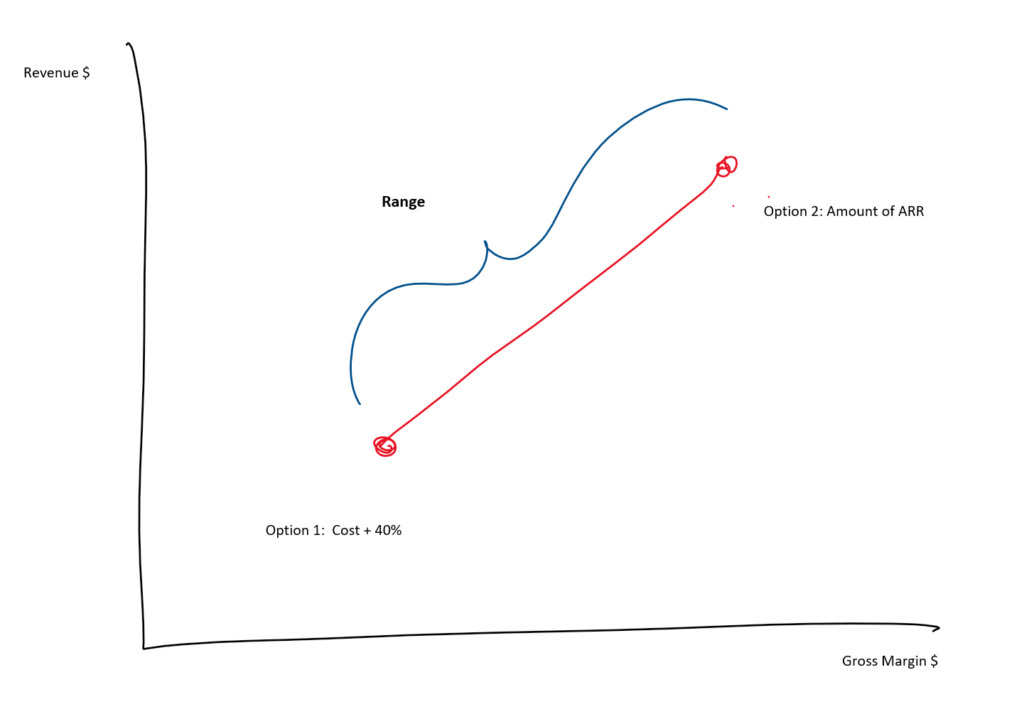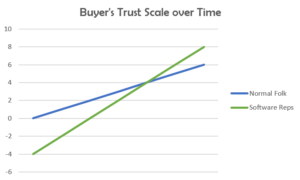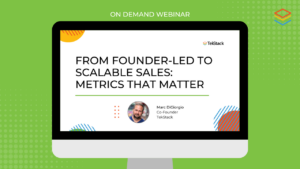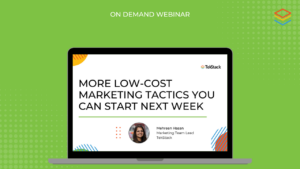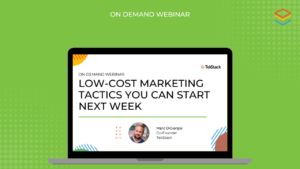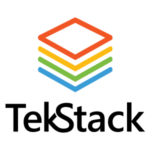
Creating fixed-priced packages for SaaS companies is good for your SaaS company and your customers. If you aren’t doing them today, you should prioritize this initiative. If you are doing them today, fantastic, these tips may help you improve their profitability and customer experience.
Why Accelerated Service offerings are important for the Microsoft ecosystem right now:
- There is a period of rapid tech adoption in the Microsoft community. As Satya recently stated, “We’ve seen two years’ worth of digital transformation in two months”. Don’t miss the adoption wave. Customer onboarding is a barrier to growth for most businesses. Getting faster and better at onboarding customers will allow you to increase the rate of customer acquisition which increases recurring revenue.
- Reducing the cost of onboarding gives you an opportunity to transfer services dollars into recurring revenue dollars which does two things. Creates greater valuation, and increases the LTV of each customer.
- Predictable and well-defined implementations make onboarding new employees infinitely easier and also reduce the customer support burden.
- Customers want these packages more than ever. They want immediate value from their tech investment, they want prescriptive implementations, they want low risk and cost assurance. By presenting a packaged offering you give them a path to change management and adoption, and they buy with confidence. It will inevitably result in higher win rates. Low win rates are what kill technology companies.
So where do you start? We have a longer ‘whitepaper’ on the topic that you can download here. (You can just download it, the submission form is just there if you want to talk or see a demo of how TekStack helps with all this stuff)
Step 1: Create a killer offering
This is the easiest of the three steps and there are two ways to go about it.
- Do a full market analysis interviewing customers, lost prospects, and competitive offerings. Figuring out the minimum product customers value most, and what they would pay for it.
- Skip all that, and just take the last successful proposal that you’d be happy to repeat, and build out an offering from that.
There is value to both approaches. But being the pragmatic type that we are, our recommendation is the second approach. It will save you a month of work and you can iterate the offering as you gain experience. Just make sure you can answer these questions.
- Where did the customer get the most and least value from the experience?
- What scope could they live without?
- How many hours did it take to deliver the project?
- If you had to deliver the project with 25% less effort, what would you change?
- Is there value in the 25% of effort that got lopped off?
Setting a Price
When setting a price, it needs to be set somewhere between not losing your shirt and the maximum amount that doesn’t impact win rates. Remember the pricing of your services will impact the adoption of the software you are trying to sell. Setting prices too high drag on other revenue. Our recommendation is this: Set the price somewhere between your actual Cost + 40% gross margin and the first year’s ARR. Example. If your average ARR is $20,000 the maximum package price should be that. Any bigger than that you should probably have a look at your software pricing model as it will be a red flag to buyers. So in this example, If your labor cost to implement the package is $5000, the minimum price is about $7,000. There is a good reason for this range that we could go into at another point.
Creating T-Shirt Size offerings
If your goal is to sell this offering for 80% of the software transactions, you need to present a smaller package option and a larger option. This gives your sales team a release valve for when the question comes up in the buying process. “Oh, Mrs. Prospect, you don’t have a $10,000 budget to implement? No problem, we have a $5,000 option for you as well”. And on the other end, you don’t cut yourself out of opportunities where the buyer has very specific requirements or perceives their needs to be unique.
Step 2: Manage with Intent
When you are creating fixed-priced packages for SaaS companies and you get through the first step with success; fantastic!. The next equally important step is to rethink how your services team is managed, and how you manage projects. You’re effectively running your business as a fixed-price shop. This transfers the risk to your organization, changes how your invoice, how you record revenue. You also need to provide your project team with very clearly defined SOW documents, tools to manage change, and providing coaching so they can get out of sticky conversations.
Work from a single project plan template. When the sales team quotes this service product or ‘SKU’ they should have a standard project plan, and statement of work they can share with the customer. This is the same project plan your project team should inherit. The team shouldn’t be creating a new one each time. Doing this messes with the cost structure, budgeted hours by role, and scope. It also sets a poor expectation with the customer who already approved the SOW as part of the agreement.
Manage changes. There are two types of changes. Changes that result from internal problems. Ex. bugs that force rework, or resources that need a skills ramp-up, or perhaps the project plan was just too aggressive in the first place. Regardless, the reason for this type of change needs to be tracked. The second type of change is scope change. This is where the customer wants more than was included in the proposal. If you charge for this change or not is a business decision. The customer should be subject to a change request procedure, even if it’s a zero-dollar change request. It sets a signal to the customer that you are serious about this stuff and allows you to bank some goodwill that you can use down the line.
Maintain constant communication with your stakeholder. Most buying execs move on after the sale focusing on the next priority. But it’s critical that they stay engaged in the project, and that you capture their sentiment formally (we like NPS surveys the most). To keep them engaged, make sure you align the updates to the project objectives versus the task level stuff. Ideally, give your team a standard template for project status reports.
Tools to manage projects. Give your team the tools they need to do the job. This means getting rid of broken processes and all spreadsheets! (We have a checklist of tools you need in the whitepaper)
Tracking project efforts. Dump your T&M metrics and start thinking in terms of project metrics that the team can actually control. The people that are doing the work can’t control revenue, but they can control effort and time. Measure the effort in hours, not days. At a task level, they need to see the budget, actual, estimate at completion, and variance. This information should be easily accessible to resources and project managers at all times.
Time Entry. At maximum, this should be done weekly, at best, it should be captured daily. Human memory wanes over time. Put controls in place to capture time. With fixed-price projects, there is no concept of ‘non-billable’ time. All-time is time. Also, set up internal projects and support projects so that you can capture customer profitability. More on that in another post.
Feedback on progress. In fixed-price worlds, you need to know the actual effort, but also need to know if anything is at risk of completing within the budgeted amount. And you need that feedback early. 50% through the budget but only 10% complete? That’s a red flag.
Scheduling. In addition to managing projects perfectly, you also need to make sure you are getting the most from your team. This means knowing what work is scheduled, and what their availability is. Their roles and skills are important to track so that you can assign the right work. As project timelines change, this opens up availability pockets or can drag on other projects. You want this information at your fingertips so you can slip in smaller assignments.
Revenue Recognition. In a fixed-price world, revenue recognition is a different beast. Invoicing is tied to milestones in the project, revenue recognition is based on the project progress. We’ll talk more on this another time, but it needs to be managed entirely differently so you don’t get caught writing off past revenue.
Step 3: Measuring your success
When creating fixed priced packages for SaaS companies you need good data. With good data comes great insights, or something like that. But seriously, timely data is critical to your business success. Spend your time doing something about the information, versus spending time finding the information. Here are the metrics we think you should care about most:
| Project Level | |
| Progress | Expressed as a %, at project and project task level |
| Effort | Track budgeted, actual, proposed, and estimate at completion. |
| Labor Costs | Track budgeted, actual, proposed, and estimate at completion. |
| Project Profitability | Gross Margin, taken at baseline, and showing actually. |
| Project Tasks requiring more time | A list of tasks requiring more time than budgeted, with reasons |
| Added Scope | New tasks, scope change. |
| Billing Milestones | Amounts, status, how they are broken out if they are conditional on customer approval |
| Invoices | What is the total value of the project, how much has been invoiced, what is the invoice status |
| Cost Consumption | Expressed as a %, ideally in line to progress % |
| Customer NPS | What is the customer thinking? Tie NPS survey results to the project. Identify survey results based on customer’s role. |
| Team Level | |
| Resource Backlog | The number of hours contracted (approved) but not yet assigned to a resource. Should be broken out by the project, by role, and by project type. |
| Revenue Forecast | What is the planned revenue? Should only include work that is assigned to resources. |
| Team Gross Margin | Earned Value over Actual Labor Costs. Can be expressed as a %. Should be compared against planned revenue and expected costs. Compare this against the financial statement gross margin. |
| Earned Value | How much work was completed in a period of time by the team? How does that progress translate into revenue? |
| Recognized Revenue | Ideally the same as Earned Value but building conservatism into revenue recognition is important in case you get behind on invoicing or projects are at risk. |
| Utilization | What was the utilization, represented as a %? Utilization is the amount worked on projects over the total capacity of the resource. Ideally, you can look at this by role, by the team, or at a resource level. How did the utilization book compare against the actual? What is my booked utilization in future periods? |
| Upcoming Billing Milestones | What billing milestones are coming up? How are those projects fairing? Billing Milestones drive invoice and cash collection, they don’t impact revenue recognition, but it’s good to make sure everything lines up. |
| Customer NPS | Are your customers happy? What is the NPS per project? How does that break out by customer team role (ex. Exec sponsors, project manager, user)? Is my customer NPS going up or down post-implementation? Is my general trend positive over time? |
| Customer Profitability | Accounting for the annual recurring revenue, what is the cost of supporting a customer post-go-live? |
| Late & At-Risk Projects | Simply a ready list of projects that are at-risk, late, or over-budget (actual effort variance) |
| Task Category Variance | Which task categories does my team struggle with? (ex. Analysis, configuration, testing, UAT, go-live support, project management) |
| Resource Variance | Which resources are habitually over budget on assigned tasks? How do they compare against like resources? |
| Impact of Internal Projects | What impact do other internal projects have on my team’s utilization? (ex. Customer events, sales, etc) |
| Impact of Support Tasks | What impact does customer support task assignment have on my team’s utilization? |
Conclusion
Companies that are successful in creating fixed priced packages for SaaS companies will increase their win rates, increase customer satisfaction and stickiness. The result? Increased retention and churn performance. t’s a good thing.
If you’d like to learn more about how TekStack can help, contact us today. Our software product gives you all the tools you need to do everything in this blog. If not, hopefully, this blog gives you some tips that you can implement today.

